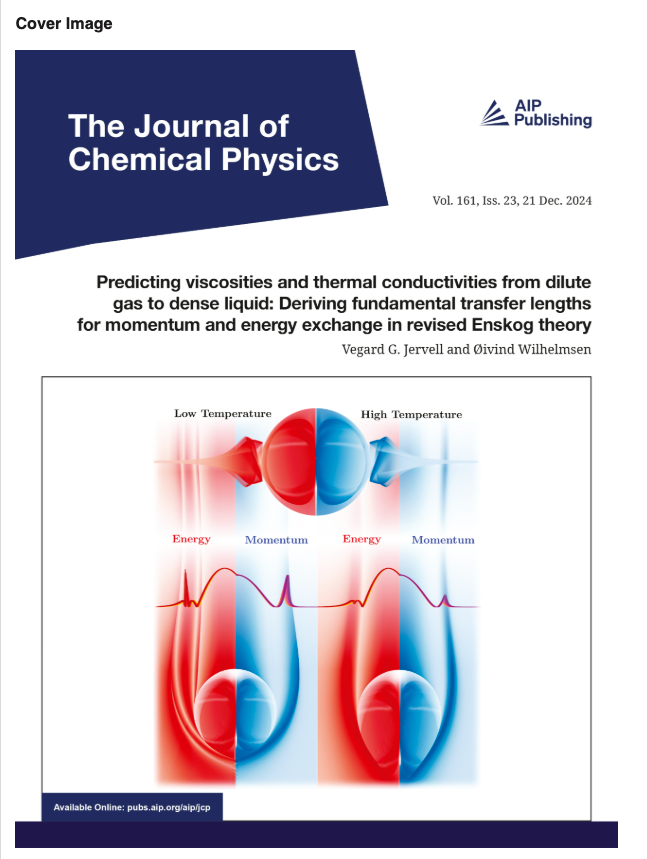Congratulations to Vegard G. Jervell and Øivind Wilhlemsen. Their publication on “Predicting viscosities and thermal conductivities from dilute gas to dense liquid: Deriving fundamental transfer lengths for momentum and energy exchange in revised Enskog theory” was considered as noteworthy by the editors, thereby selected as Featured and on the front page of the Journal of Chemical Physics in December 2024 (Vol. 161, Iss. 23)
Vegard Jervell is a PhD-student in the Thermodynamics group at NTNU and a PhD-candidate in PoreLab.
In this recent article, Vegard and his supervisor Øivind Wilhelmsen presents the first purely predictive kinetic theory for the viscosity and thermal conductivity of dense fluids and mixtures, yielding accurate predictions even without any a priori measurements. This was long believed to be impossible.
The authors write the following about their publication:
Many models can be found in the literature for prediction or estimation of the viscosity and thermal conductivity of pure fluids and mixtures. At low densities, Chapman-Enskog theory is widely used, as it provides a direct link from the molecular pair-potential to the transport properties. However, at higher densities, previously published models rely on determining a parameter related to the size of the molecules in question, and this parameter has previously been estimated by fitting to experimental data. While yielding reasonable agreement with experiments, this approach breaks link between the interaction potential and the transport properties. In this work, we have recognised that the length scales in question are intimately connected to the distance momentum and energy are transferred from one molecule to another as the molecules collide, termed “transfer lengths”. We have developed a model that allows the transfer lengths of a molecule to be predicted directly from the interaction potential, thus creating a direct link from the interaction potential to the transport properties at high densities. With pair-potentials fitted to ab initio quantum mechanical calculations, this represents the first purely predictive model for the viscosity and thermal conductivity of dense fluids and mixtures, yielding accurate predictions even without any a priori measurements. The findings were featured in the Journal of Chemical Physics, where they were also published as the front-page article.

